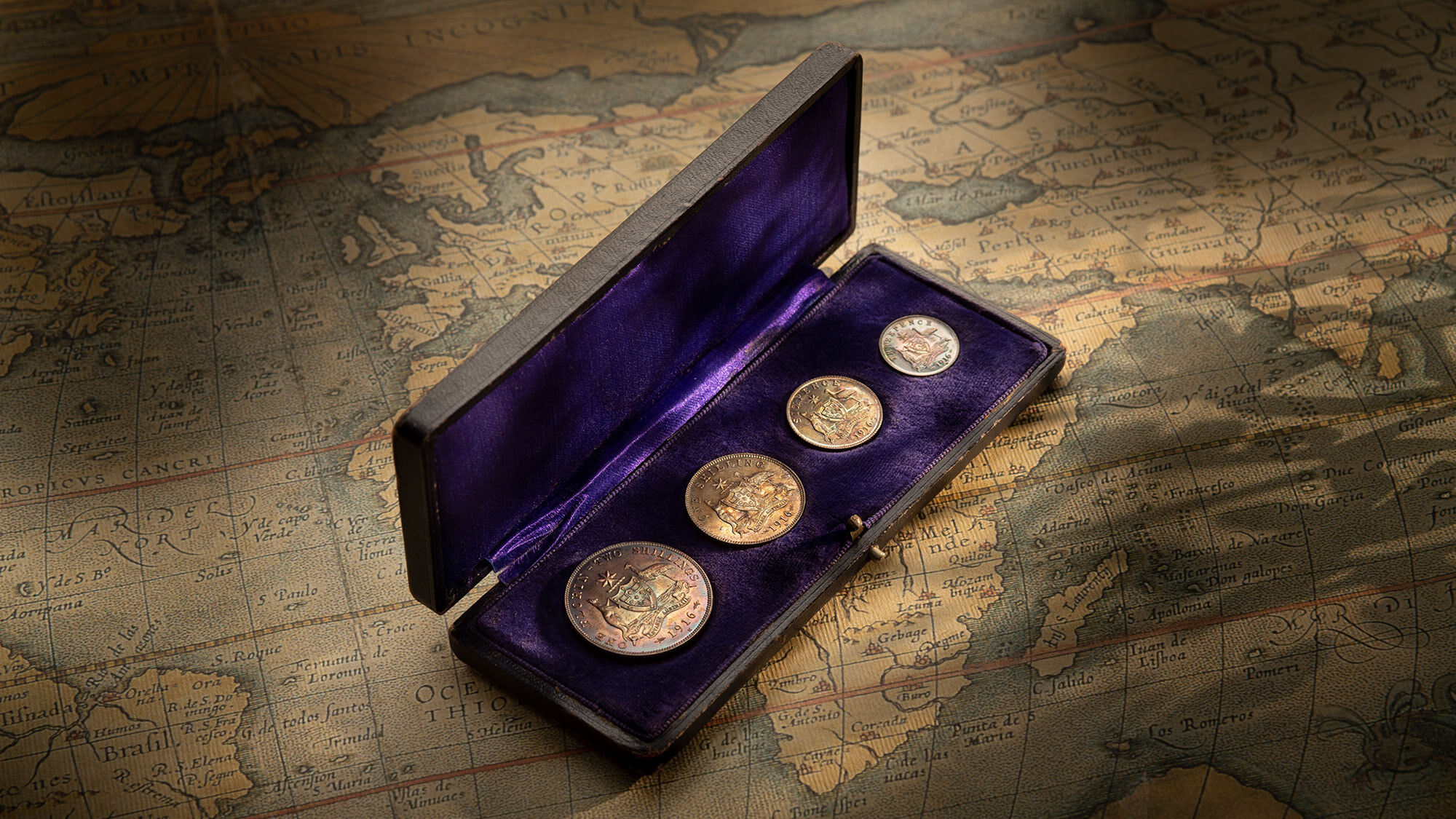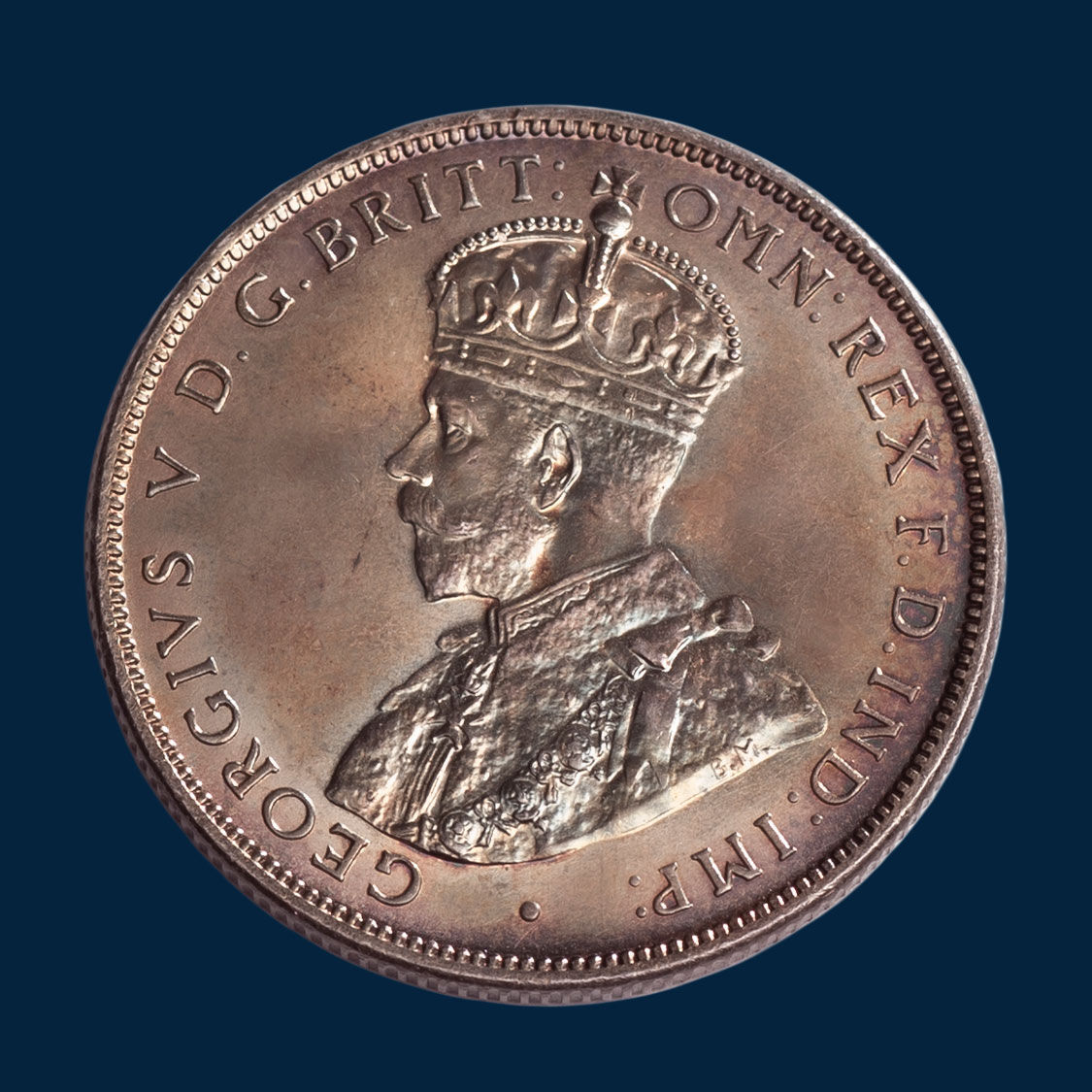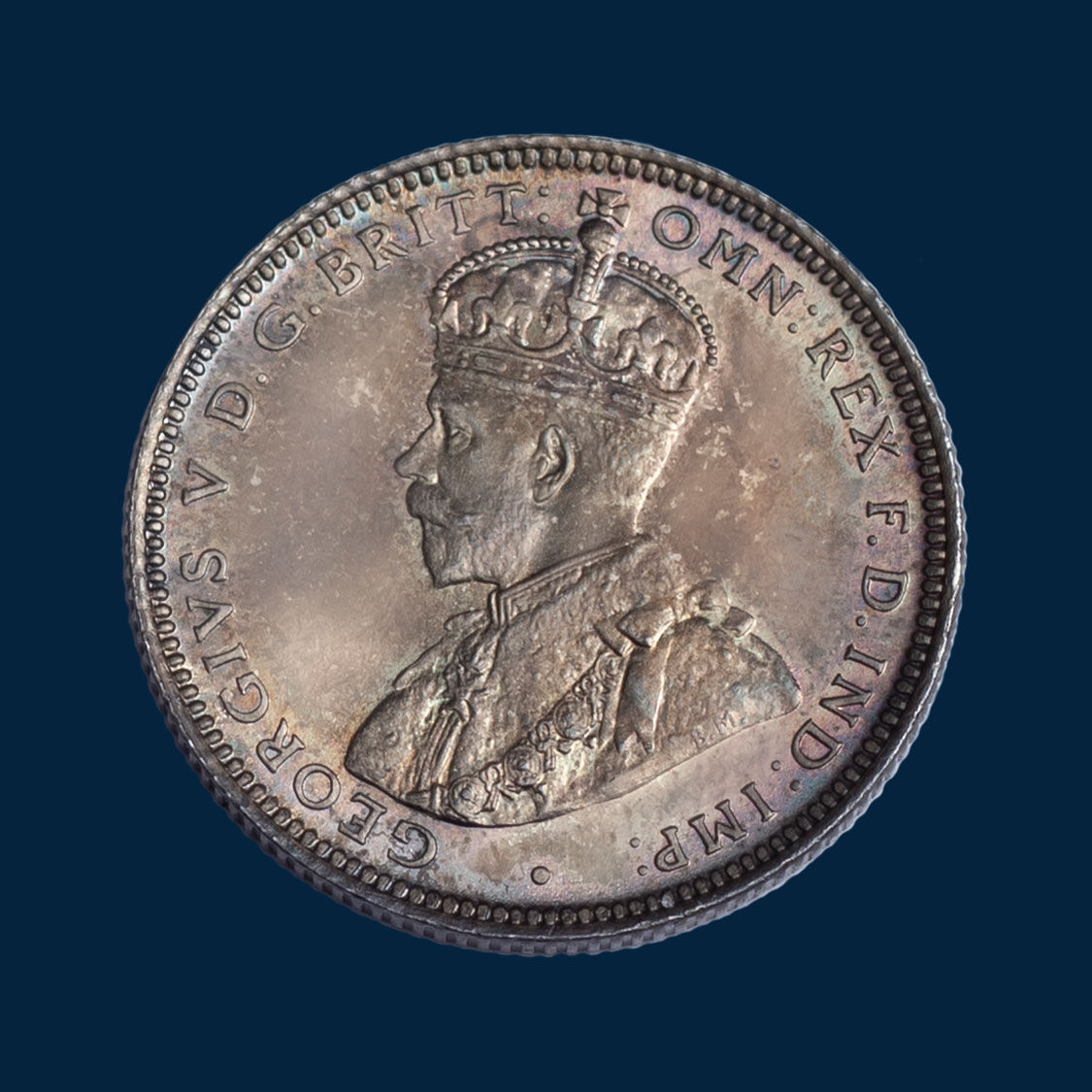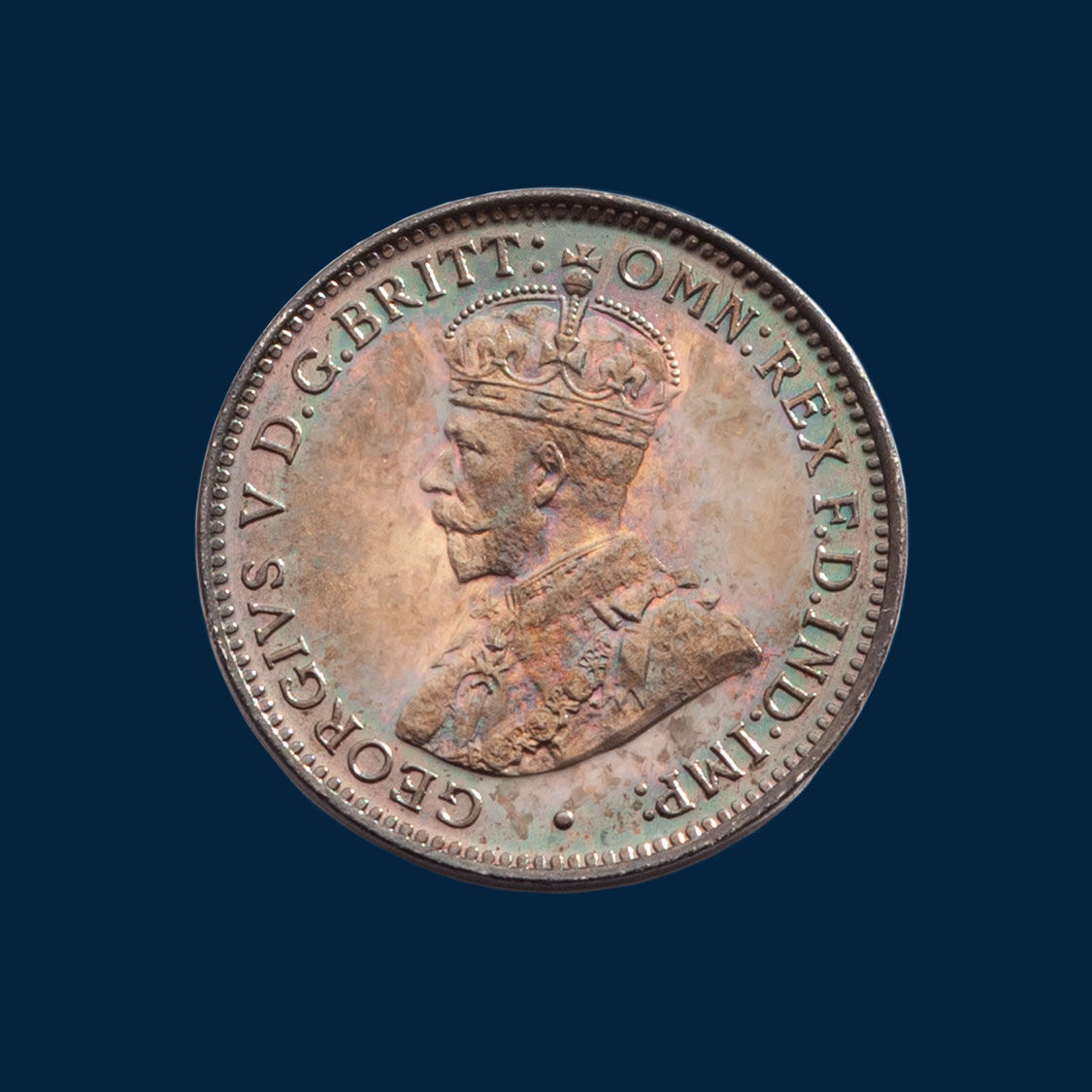1916 Specimen Set in an original velvet-lined Melbourne Mint case of issue.


The Melbourne Mint's 1916 Presentation Set is a cultural treasure, respected as the very first issue of Australian coins made especially for collectors. Four coins make up the set, the florin, shilling, sixpence and threepence struck to specimen quality, housed in an especially crafted velvet-lined blue case. It was a big deal at the time, a celebration of the Melbourne Mint’s inaugural striking of Australia’s Commonwealth silver coinage. And it’s a big deal today with only seven original cased sets sighted at auction over the last half century. The set’s importance has been the subject of many articles, one of which penned by Dr Vince Verheyen, is provided below. Testimony to the calibre of this particular set, it was selected as the front-cover item of Monetarium Singapore's inaugural auction in 2008. An inaugural set for an inaugural auction, a masterstroke touch! And this history-making 1916 cased Specimen Set is available now.
Two dates are integral to the Melbourne Mint's history and the nation’s numismatic heritage. The first is its year of opening, '1872'.
The second is '1916', when the Melbourne Mint expanded its gold coining repertoire and commenced striking silver coins for the newly formed Commonwealth of Australia.
The mint did not produce any presentation pieces to celebrate its opening in 1872, a missed opportunity for today's collectors.
That numismatic shortcoming was addressed in 1916 when the Deputy Master of the Melbourne Mint authorised the production of sixty cased Presentation Sets, a portion earmarked to sell to collectors with a 2/-3d premium over face value. Others were gifted to dignitaries.
Natural attrition has taken its toll on the original mintage and only seven cased presentation sets have been observed at auction over the last half-century.
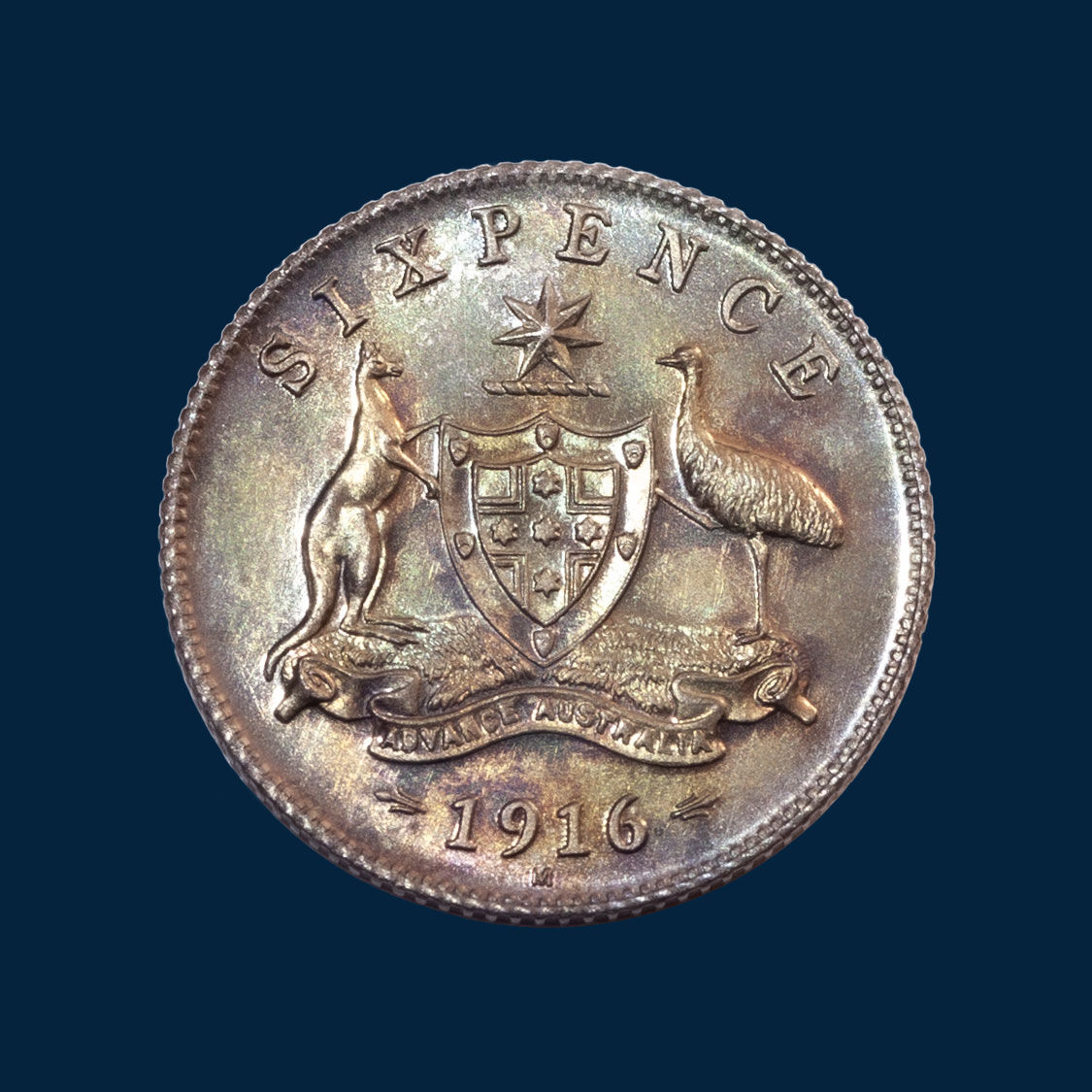
1916 Specimen Sixpence

1916 Specimen Florin
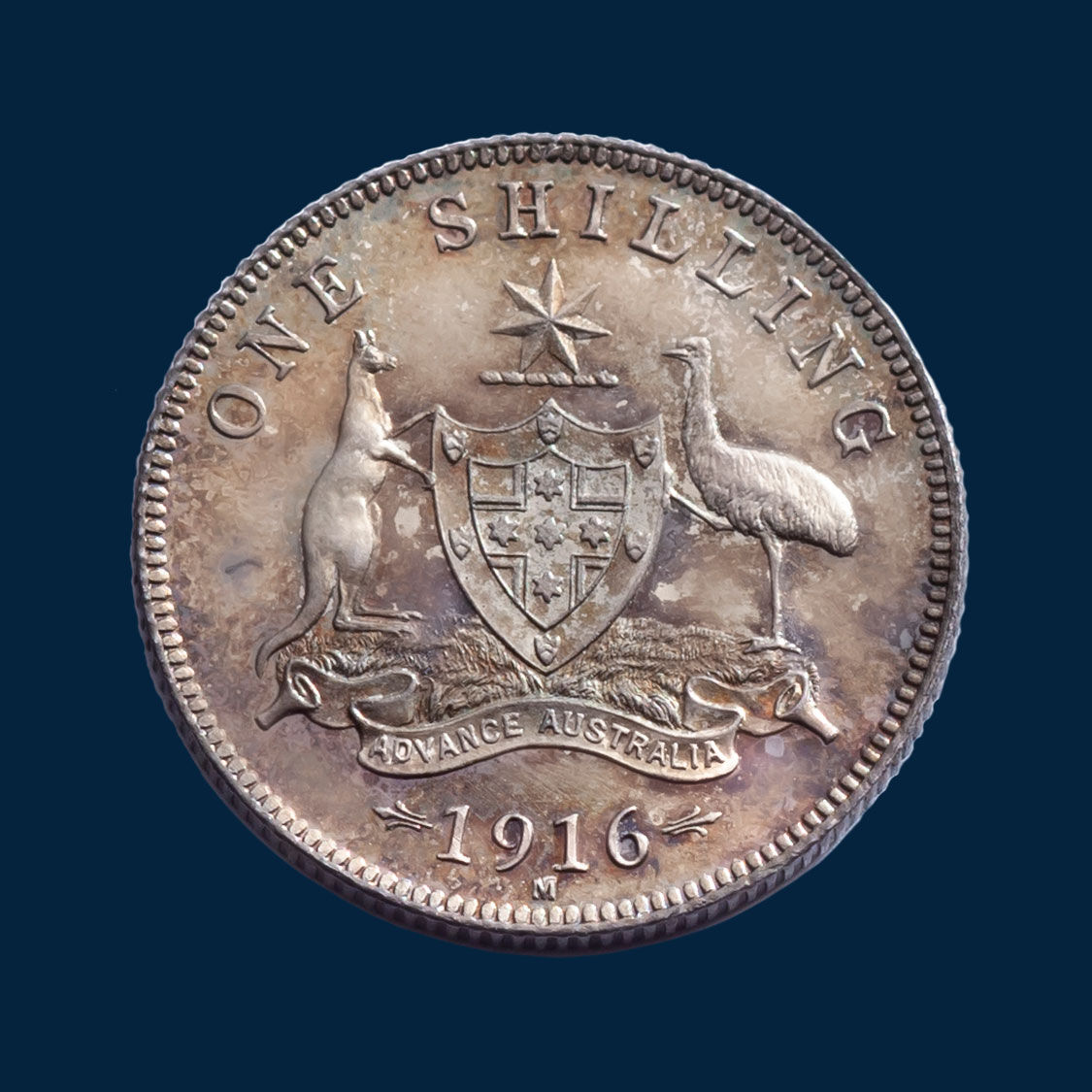
1916 Specimen Shilling

1916 Specimen Threepence
The Melbourne Mint’s iconic 1916 cased specimen set stands out as the first Australian made presentation for collectors of the Commonwealth's coinage. There are a few things to note about the 1916 cased specimen set.
First up the royal-blue case. The case is a stamp of authority indicating that the coins are presented today as they were originally intended more than a century ago. The integrity of the set is maintained by the case. Respected numismatist and author, Dr Vince Verheyen's take on the royal-blue case supports our view that it is an integral element of the presentation. “It cannot be over-emphasised that the set must be supplied with its original case.”
The second is that the coins tone. The toning to all the coins, again gives authenticity to the set. And given the different mirror and matte finishes of the four coins, collectors should not expect the toning to be identical, a point again emphasised by Verheyen. He also added ... "I would be suspicious of any bright white specimens given their age.”
The third point to note is storage for over the years we have been asked if the coins should be stored in the case? The coins will be housed in archival quality (museum quality) coin holders and presented in a quality velvet lined tray, thereby preserving their investment value. The royal blue velvet case will be separate to the tray.
Each coin in this 1916 Presentation Set was assessed by Coinworks, and Dr Vince Verheyen as part of his research into the article on the 1916 cased Specimen Set. (See below)
We note the similarities in toning between this set and that held in the Melbourne Mint Museum.
Coin Descriptions
1916 Specimen Florin -
A stunning coin with superb colours. The obverse a gold / green. The reverse with blue on the periphery and purple on the interior. The florin is superbly struck and has fabulous detail in all the design elements with a lovely smooth matte surface on both obverse and reverse. A highly reflective coin in the light. Striations are noted on the reverse.
1916 Specimen Shilling
That so much can be written on a one shilling coin reflects the meticulous nature of the strike and the beautiful aging process that it has enjoyed. This coin is intriguing in the light. It is superbly struck with mirror surfaces between 4 o'clock and 8 o'clock in the shield area and below 'Advance Australia'. (This phenomenen was noted by Vince Verheyen in his study of the 1916 Specimen Sets.) The reverse reveals multiple striations (raised parallel lines) across the fields; with those between the scroll and date and behind the emu strongly evident. Precise edge denticles, a high rim and beautiful antique toning on both obverse and reverse characterises this shilling.
1916 Specimen Sixpence
While the florin in a 1916 Set receives most of the accolades (because of its size), the sixpence in this set almost steals the show. It is glorious. Proof-like with beautifully mirrored fields. Very well struck, the denticles on the reverse rim are unusually strong. And magnificent colours. Heavy striations on both obverse and reverse are noted. Beautifully mirrored fields on the obverse with microscopic striations confirming careful preparation of the dies.
1916 Specimen Threepence
A full brilliant mirror finish with handsome blue and pink toning. The coin is extremely well struck, noticeable in the strength of strike in the star, shield and scroll. Strong striations confirm careful preparation of the dies at the Melbourne Mint.
Early in November 1915 the Melbourne Mint was formally instructed to commence preparations for the striking of the Commonwealth's silver coinage. The silver was sourced locally from the Broken Hill mines.
It is noted that prior to 1915, the nation's silver coinage had been minted overseas at the Royal Mint London and the Heaton Mint in Birmingham.
Towards the end of November 1915, dies for the set of four denominations were sent from London.
Six weeks after the dies were shipped, the Governor of Victoria Sir Arthur Stanley K.C.M.G, struck the first circulating 1916 shilling. It was logical that the Melbourne Mint would begin striking silver coinage with the shilling denomination given its similar physical size to their familiar sovereign.
The florin was struck almost immediately after, sixpences by the middle of 1916 with the threepences finally later in the year. More than 11.5 million silver coins were released into circulation that year.
The Melbourne Mint's inaugural striking of Australia's Commonwealth coins was a momentous occasion in minting circles. The Deputy Master of the Melbourne Mint therefore decided to create a Presentation Set to record the occasion.
Each presentation set was comprised of the four silver coins of florin, shilling, sixpence and threepence, each featuring the Melbourne mint mark ‘M’ below the date 1916 and minted to specimen quality.
The set of four was housed in a handsome, velvet-lined royal blue case that had been locally sourced.
The availability of the four-coin specimen presentation set was confirmed in November 1916 when Le Souëf recorded an entry of sixty specimen sets in the Mint Museums’ cash accounts with a face value of £11 5/-.
While records show that 60 sets were produced, sixteen were sold, collectors charged 6/- for a cased set.
A further 25 sets out of the original mintage were presented to dignitaries and politicians with the precise fate of the remaining sets unknown.
What we do know is that many of the cases have been lost and many of the sets have been broken up and sold as individual coins.
We also know that others were accidentally used as circulating coins, their value irreparably reduced through wear.
Over the past 50 years we have sighted only seven sets housed in their original case of issue.
© Copyright: Coinworks
